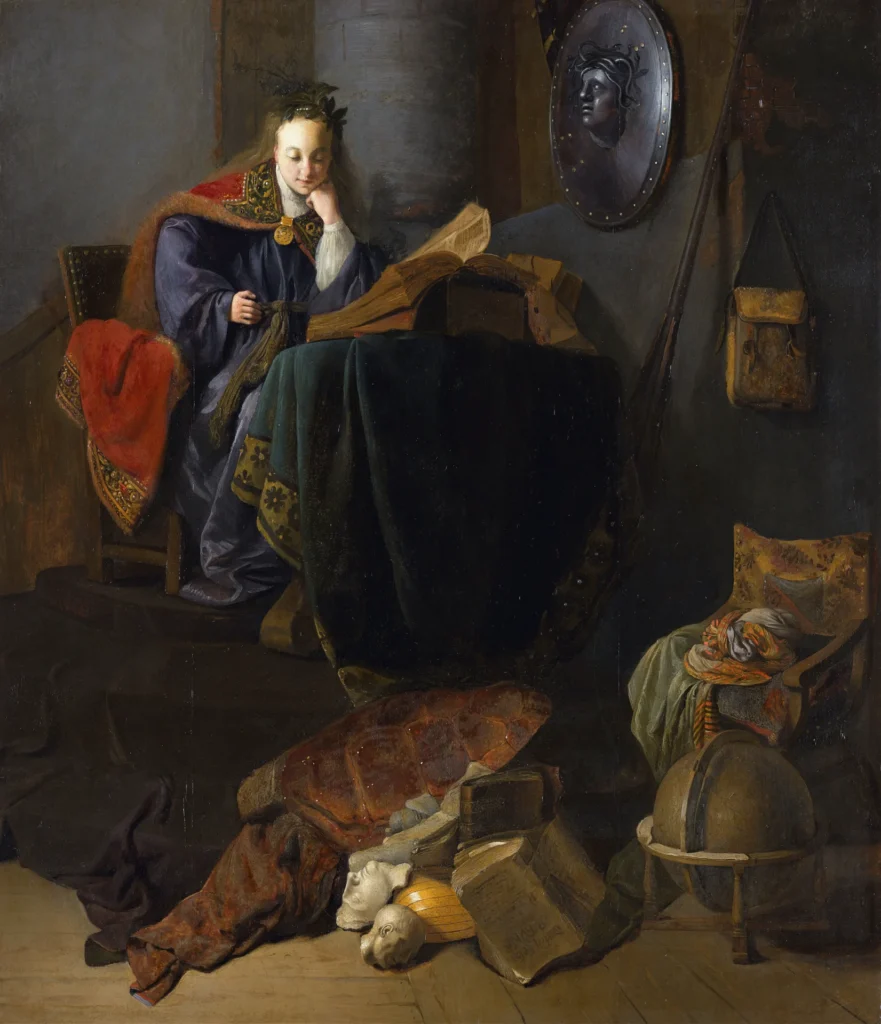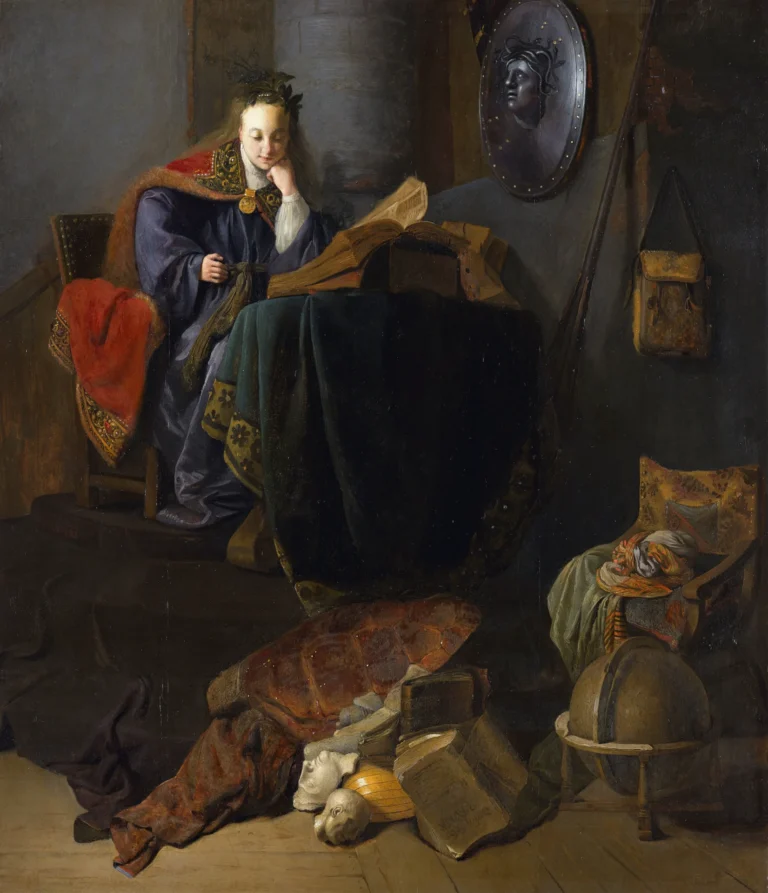Minerva in Her Study (1630)
In 'Minerva in Her Study,' created in 1635, Rembrandt presents the Roman goddess Minerva, symbolizing wisdom and war, in a richly detailed setting. She is depicted with a laurel wreath and surrounded by scholarly objects, including books and a globe. This painting beautifully balances her peaceful scholarly demeanor with her warrior aspect, aligning with the intellectual currents of the Dutch Golden Age and showcasing Rembrandt's unique blend of realism and grandeur.
Year 1635
About the Artwork
'Minerva in Her Study' draws its narrative from the Roman goddess, revered for her wisdom and strategic warfare. Created during a period of Dutch prosperity, this work reflects the humanist ideals prevalent in Amsterdam, where arts flourished. Rembrandt’s choice to depict Minerva in a serene study rather than in battle emphasizes the value of knowledge over conflict. This artwork also mirrors the political atmosphere of the 1630s, highlighting the shift towards intellectual pursuits during turbulent times. The detailed elements, such as the Gorgon's head on the shield and the rich textures of her cloak, reveal Rembrandt's fascination with both mythology and the intricacies of human emotion, marking his continual exploration of the interplay between wisdom and warfare.
Did You Know
Liked what you see? Add it to your collection.
Enjoyed reading? Share it.
... continued
Date and Creation
The painting was created in 1635 by Rembrandt van Rijn.
Subject and Composition
The painting depicts Minerva, the Roman goddess of wisdom, war, and crafts, in a study setting. Minerva is shown looking up from a large folio, with a laurel wreath on her head, a pearl necklace, and a heavily embroidered cloak. The background includes various objects such as volumes, a globe, a golden helmet, a spear, and a large shield with the Gorgon’s head.
Style and Significance
Rembrandt's depiction of Minerva emphasizes her peaceful and scholarly aspects, contrasting with her role as a goddess of war. This portrayal aligns with the humanist ideals of the time and may have been influenced by the political climate of the Dutch Republic in the 1630s. The painting is notable for its detailed foreground and the monumental effect achieved by Rembrandt's composition.
Provenance
The painting has had several owners throughout its history. Initially, its earliest recorded owner was James Somerville, 12th Lord Somerville. It later passed through various collectors, including the Duveen Brothers, Marcell Nemes, Axel Lennart Wenner-Gren, and others. It was part of the Bridgestone art collection from 1988 to 2011 and is now in a Canadian private collection.
Context
Rembrandt's fascination with mythological subjects and his belief in their significance within the genre of painting reflect the Dutch humanistic traditions of his time. The painting is a powerful expression of Rembrandt's learned ambitions and his contribution to the cultural and political discourse of Amsterdam in the 1630s.










